History of Pazyryk carpet
The Pazyryk carpet is the oldest carpet in the world, which was discovered in 1947 by a Russian archaeologist named Sergei Rudenko. This carpet was found in the Pazyryk Valley, located at the beginning of the Altai Mountains in Russia, along with other ancient objects, in the frozen grave of one of the Scythian rulers, and the reason why this carpet was named Pazyryk is the area where it was discovered. After finding this carpet and performing radioactive tests on it, the date of its weaving was attributed to 400 BC, i.e. 2500 years ago. Such a history and this level of health of the carpet may be logically impossible. The Pazyryk carpet is currently kept in the Hermitage Museum of Russia in Saint Petersburg.
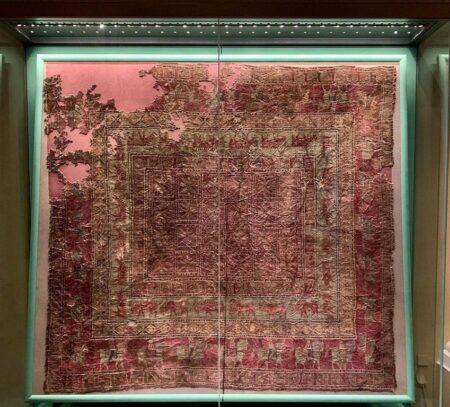
Hermitage Museum St. Petersburg
Features of Pazyryk carpet
- Grazing deer are abundantly seen in the carpet.
- Symmetric knot is used to weave Pazyryk carpet.
- The motifs used in this carpet are varied and repeated.
- The density of Pazyryk carpet texture is about 42 knots per 7 cm.
- This carpet is somewhat square and is woven in dimensions of 1.98 x 1.89 meters.
- The background color of the Pazyryk carpet is red, similar to the color of Turkmen carpets.
- Very high quality wool has been used to weave it so that it has remained healthy all this time.
- Spotted yellow deer is one of the old animals of Iran, which is repeated 24 times in this carpet.
Part of Pazyryk Rug
- The image of a horse that is repeated in the Pazyryk carpet has completely Iranian signs such as the horse’s tail, the felt under the horse’s saddle, and the horseman’s hairstyle.
- Images of a legendary animal, similar to a lion with an eagle’s head – known as a griffin – have been used, which is one of the mythical animals of ancient Iran, including the Achaemenid period. This image is repeated 123 times in the Pazyryk carpet.
- The image of horse riders who alternately sit on horses or stand next to them, is repeated 28 times in this carpet. It is interesting to know that we see this image a lot in Persepolis and its stone carvings.
The Rotten Part of The Pazyryk Carpet
Where does Pazyryk carpet belong to?
Sergei Rudenko, who is the discoverer of this carpet, after examining the structure of the carpet and its motifs, realized that the patterns of this carpet are very similar to the motifs of Persepolis, “it reminds me of Persepolis”.
Jenny Hasko is hesitant about the location of Pazyryk carpet weaving. On the other hand, considering that the patterns woven in the Pazyryk rug are similar to the objects that were found with it, it is possible that the place where the carpet was woven is the same place where it was discovered. But on the other hand, considering that Assyrian and Achaemenid elements are evident in it and it has similarities with the stone carvings in Persepolis, it is possible that this carpet was woven in the west. Ali Hasuri, a reputable carpet expert in Iran, criticized his opinion and stated: Due to the lack of documents, Hasko has divided the Pazyryk carpet from Greece to China, so that Europeans, Chinese, Mongolians, and the people of Mesopotamia and Iran are satisfied!
James Opie, a famous carpet expert, also considers the Pazyryk carpet to be woven by the Scythian desert nomads. In response to him, Cyrus Perham, an Iranian carpet expert, has claimed that it is hard to imagine that such a hand-knitted carpet was created in the 1st millennium BC in a faraway land of ice!
But according to the opinion of many archaeologists, this carpet was woven by Iranian artists and was a gift to the Scythian king in that era.

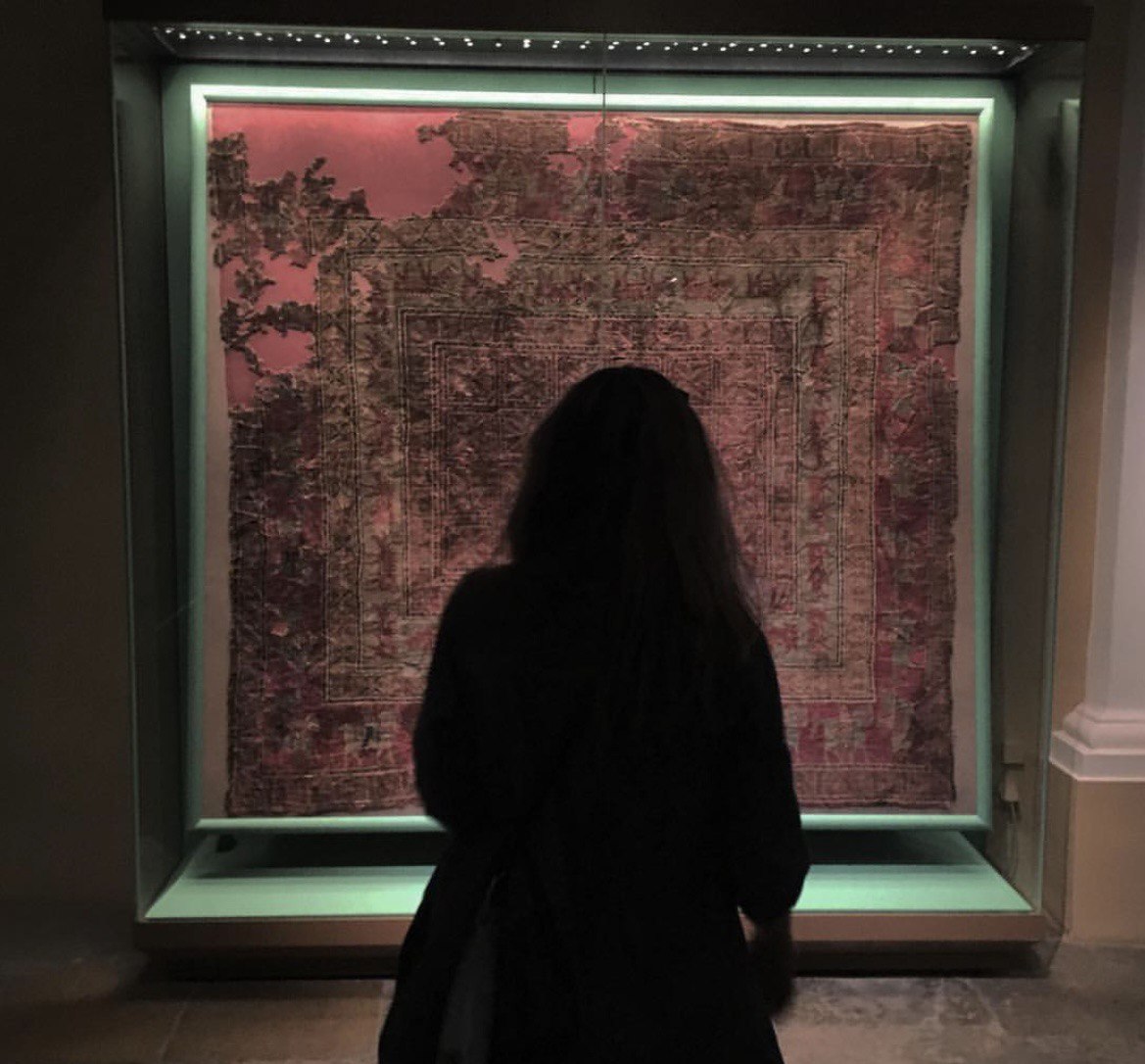
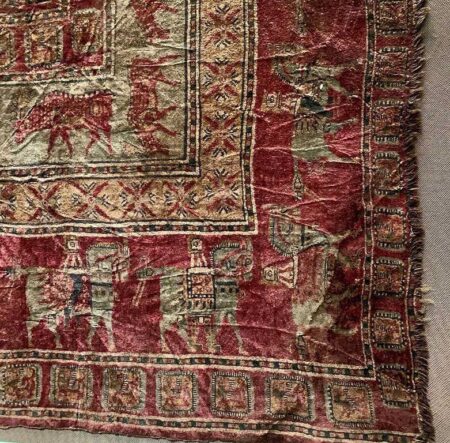
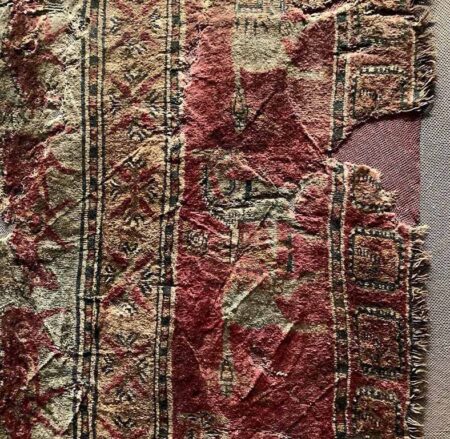
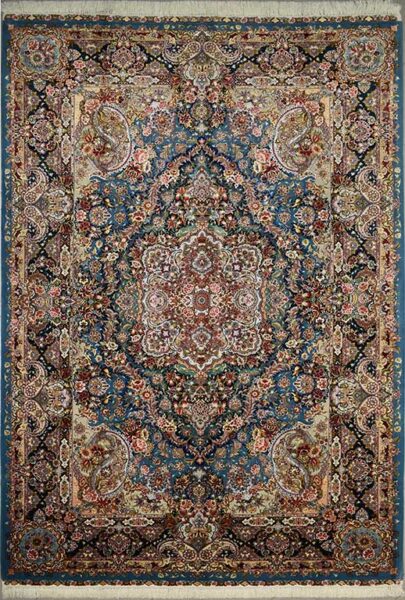

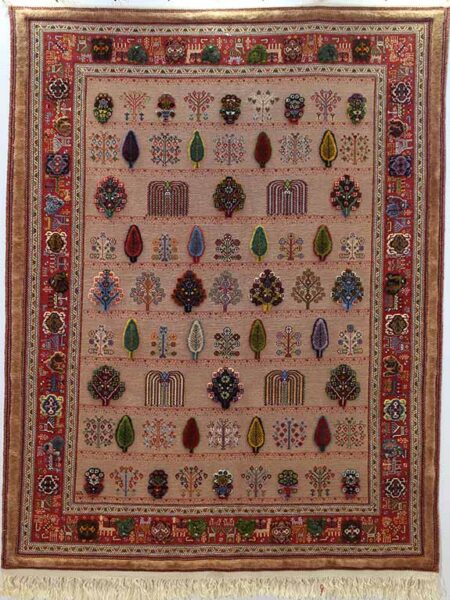
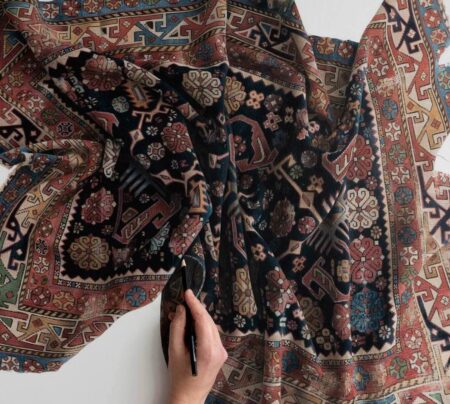

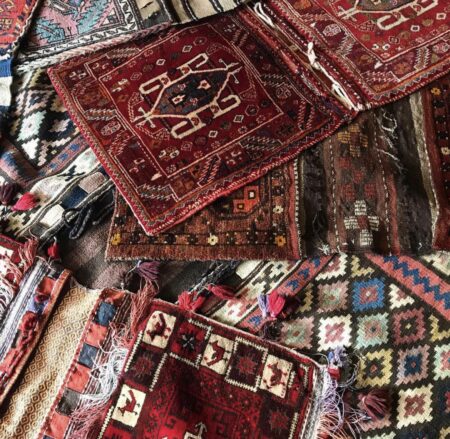

3 thoughts on “What Do You Know about the World’s First Carpet, Pazyryk?”